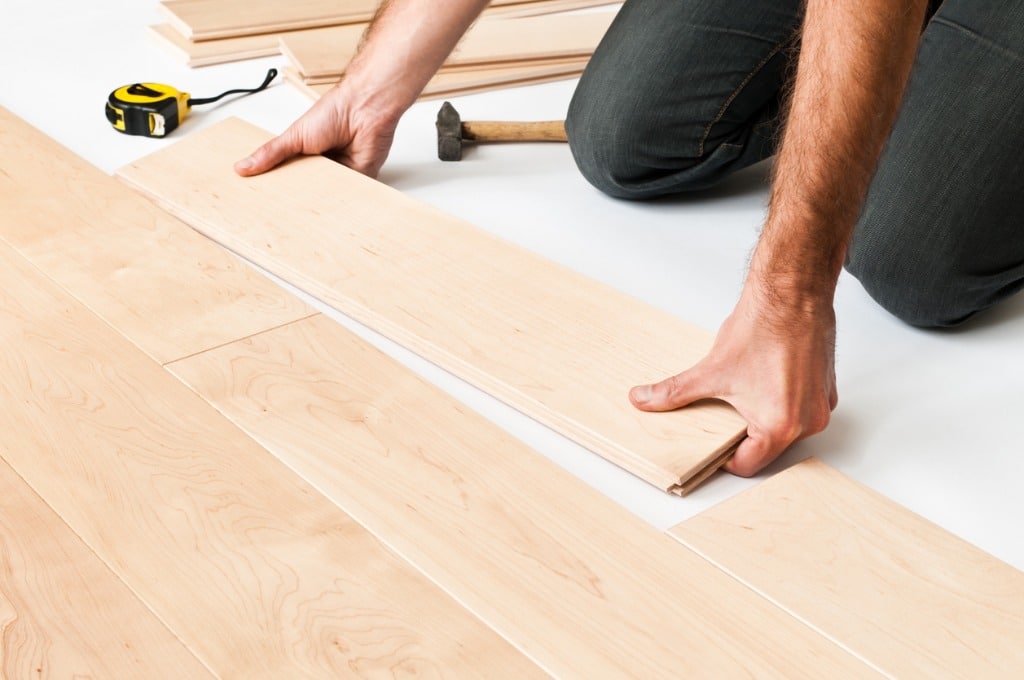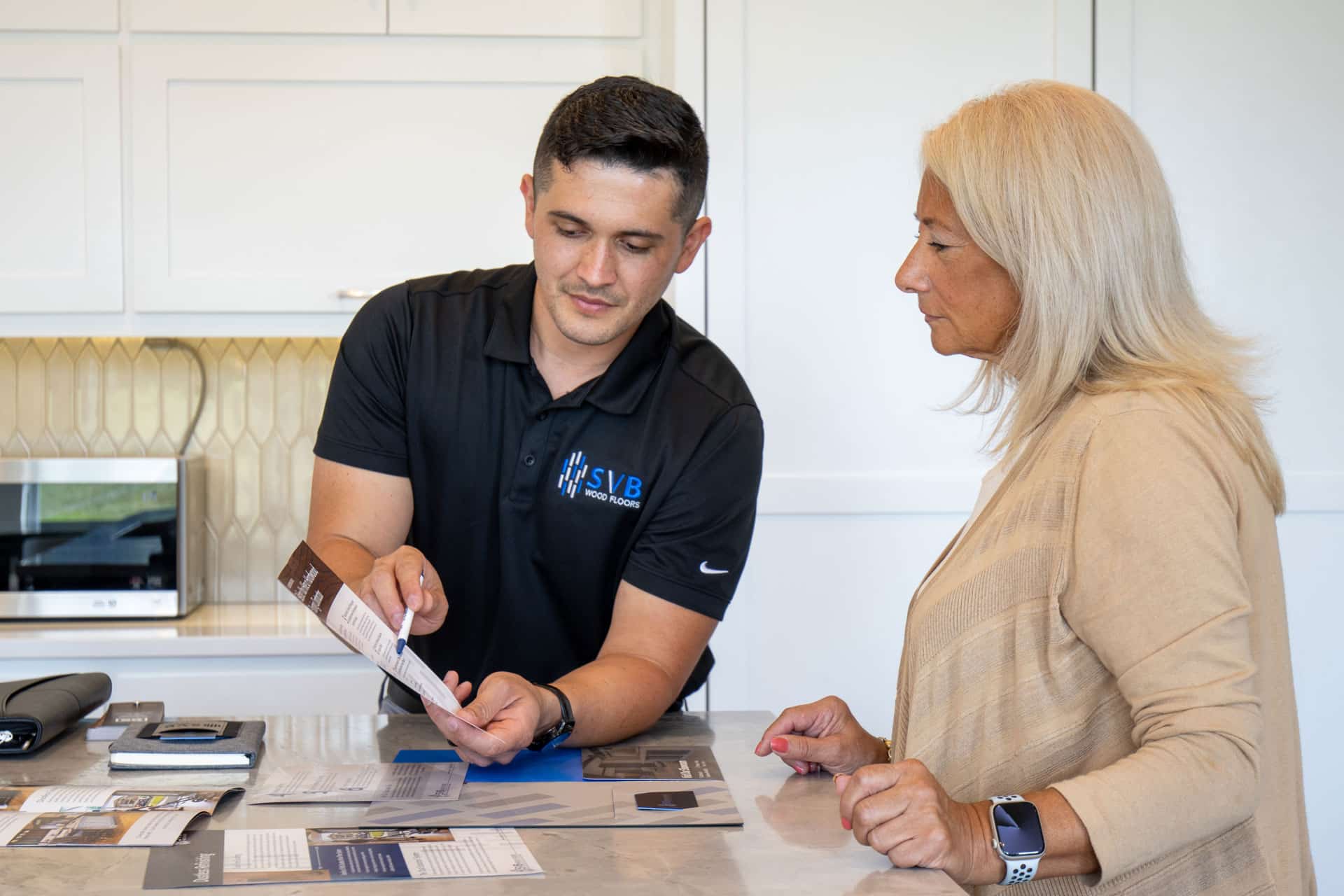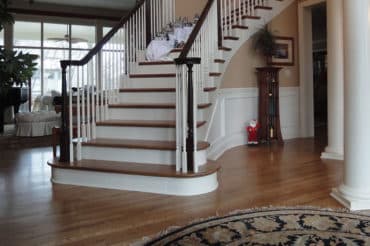
Hardwood flooring adds elegance to any room. It’s durable, matches any décor, and it’s fairly easy to maintain. You’ll get years of enjoyment! Hardwood flooring is an investment in your home, and with all the choices you have, the possibilities are endless. The first choice to make is between prefinished or unfinished hardwood flooring. Here’s what you should know.
What Are Prefinished and Unfinished Hardwood Flooring?
Prefinished flooring is sanded, stained, and sealed before it ever goes on your floor. Installation basically boils down to cutting the planks to fit the room and nailing them into place. If you’re investing in engineered wood floors, your floors are more than likely going to be prefinished. On the other hand, unfinished floors, also referred to as site-finished floors, are just hardwood planks that need to be installed, then sanded, stained, and sealed on site.
Each type of flooring has its benefits. Let’s go over the pros and cons of each type to help you decide which flooring fits your home.
Benefits of Unfinished Wood Flooring
Unfinished wood flooring is finished on site, so it does tend to be more expensive than pre-finished floors, but it also has many benefits. Keep in mind that your floor will need time to dry after finishing, so you won’t be able to immediately use it.
- Unfinished wood retains more of the wood’s natural look. It won’t appear factory-made and produced. Your floor will have warmth and beauty that you just can’t get from a prefinished product. If you’re trying to match other rooms in the home, unfinished wood is easier to match.
- With unfinished wood, you have endless options for finishing. The wood can be left to its own color, but you can also stain and seal it for different looks. It will match your home.
- Unfinished wood is wonderful for large renovations or new construction homes. The floor can be laid and finished once the rest of the work is completed. The floor is then finished, so there is no concern about damages to the floor.
- Unfinished wood floors are completely flat and do not have lines between the planks. This makes the floors easier to clean with a variety of household products than prefinished wood.
- Unfinished wood floors can be refinished for a new look, but the planks can also be removed if scratched or damaged, then sanded and refinished before being replaced. We use a dustless refinishing process that ensures no dust remains after installation and state-of-the-art products that make sure we don’t leave behind any volatile organic compounds.
Benefits of Prefinished Wood Flooring
Prefinished wood floors are factory finished. What you see is what you get. Each side of the plank has a small, beveled edge. When the install is finished, you may see a small crack between the planks.
- Prefinished wood floors can be installed quickly and used immediately. Unfinished wood floors can take days to be finished and cured before getting the furniture back to use.
- Prefinished floors don’t have the same vapors and smells as unfinished wood floors. The stain and sealants are applied at the factory, so you won’t expose your family to the possible health effects associated with inhaling a large amount of air pollutants such as volatile organic compounds (VOCs).
- With your prefinished floors, you won’t have as much dust from sanding the floors. Your home stays cleaner. Installers usually have dustless systems for sanding, but it may not eliminate all the dust that occurs.
- Prefinished floors often have a longer warranty. Some come with a lifetime warranty. They’re quite durable and the flooring is beautiful. Prefinished wood floors won’t scratch or stain as easily as unfinished wood flooring.
- Prefinished floors are usually more cost-effective than unfinished wood flooring. Initially, the planks may be more than unfinished wood, but there are fewer finishing costs, making the overall price lower.
- Prefinished floors may not have the same variety of options as unfinished wood floors, but there are many different colors and styles to choose from. The finishes are almost flawless, so the flooring retains its look for years to come.
- While a prefinished floor is durable and won’t stain as bad as an unfinished wood floor, you may not be able to re-stain or refinish it more than once.
What Flooring Fits Your Home?
With either type of flooring, you’re sure to find the finish that fits into your décor, so the thing to think about is what type of flooring you want. If you have a historical home, an unfinished wood floor may fit better than a prefinished floor. If you have children or pets, a prefinished floor might be more durable for the long run.
Prefinished and unfinished wood flooring can swell and contract, just like regular wood can. It can get humid in the summer, so you may need to invest in a dehumidifier to use in the summer and a humidifier to use in the winter to maintain the wood. You may also need to be prepared to refinish the wood every five years. A prefinished and unfinished wood floor can last up to 25 years before it needs refinishing.
You may also want to think about your short- and long-term goals. Do you have somewhere to go for a week or longer while your floor is being installed? If you want to get back to your routine quickly, a prefinished floor might make more sense. Are you planning on selling in the next two to five years? An unfinished wood flooring may appeal to homebuyers more than a finished flooring.
Talk to a real estate agent to find out what homeowners want from a home like yours to make the best investment for the future.
SVB Wood Floors installs prefinished and unfinished wood flooring. We also repair and refinish flooring. If you’re still not certain which floor works for your home, discuss it with our experts. We love all types of flooring, but we want your floors to work for how you live.
Visit our showroom to see samples of both types of flooring and to discuss the details with our experts. We can answer your questions and talk to you about the pros and cons of each so you can make the best choice for your home.





